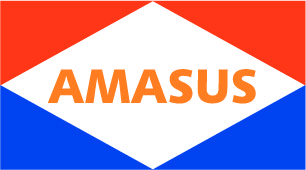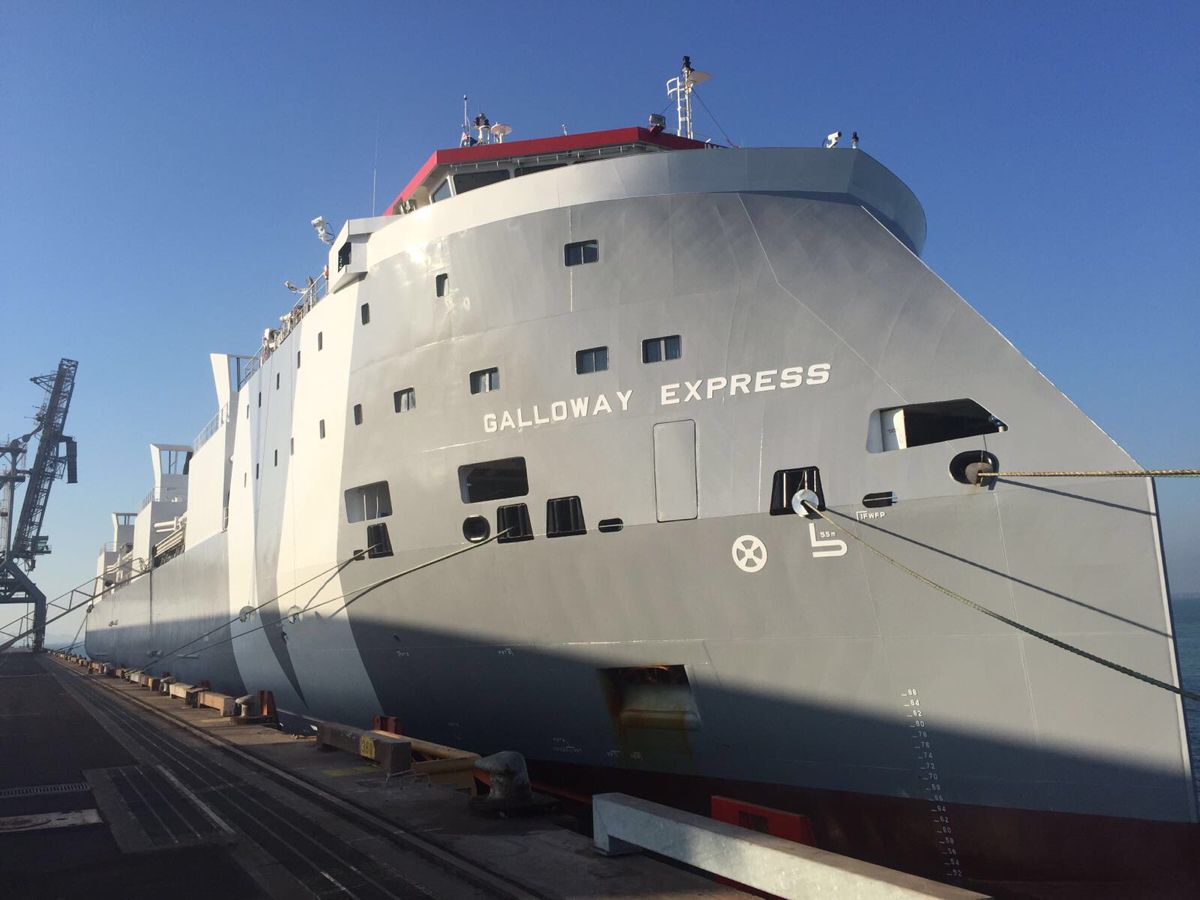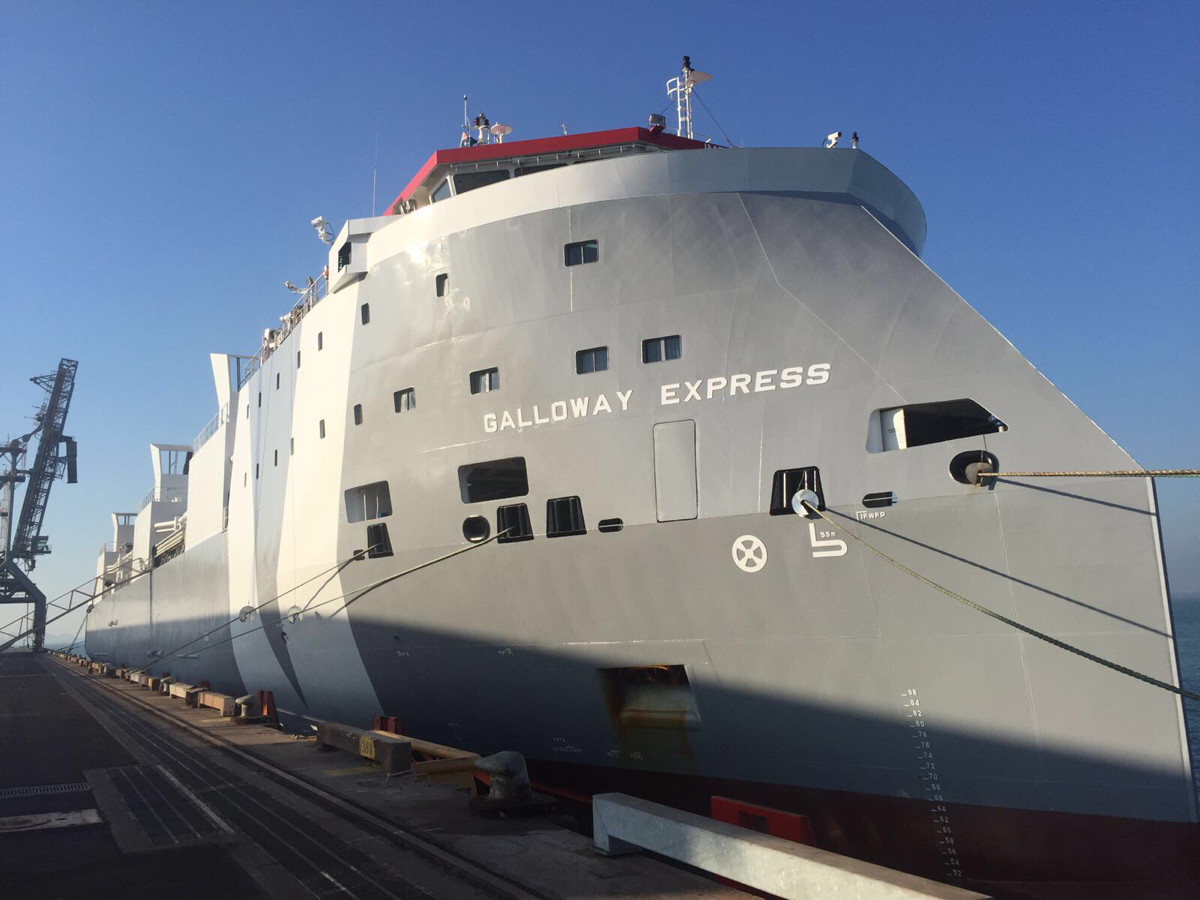Title Page
-
Prepared by
-
Location
Master's office / responsibilities
1. Certificates
-
Original copies of all trading certificates and documents are available
2. STCW
-
Verification that the Master, officers and ratings are certificated as required by the STCW Convention
-
Verification that the “Letter of receipt of application for a COE” is available on<br>board for officers sailing under the ships flag but who have not yet received<br>endorsement
3. SOPEP
-
Approved, up to date and with all contact details included
4. ISM emergency preparedness
-
Drills to be carried out regularly and effectively, with documented evidence (drill reports in MXSuite)
Bridge area
1. Nautical publications
-
Valid and as required for the voyage
2. Charts
-
Correct charts for voyages being undertaken and corrected as necessary
3. Magnetic compass
-
Easily readable and correctly adjusted (deviation card)
-
Confirmation that a table or curves of residual deviations for the magnetic compass is available on board
-
Verification that the magnetic compass deviation book is properly maintained
4. Lights, shapes, sound-signals
-
Verification that the required sound signalling equipment (whistles, forecastle bell, gong), alarms, PA systems and shapes are in satisfactory working condition
-
Verification that the required navigation lights are in satisfactory working condition
5. GMDSS equipment
-
In working order and last radio surveyor’s report is available
-
Weekly inspections and test carried out and recorded in GMDSS logbook
6. EPIRB
-
In working order; updated maintenance records available and located in a float free position which can also be accessed by ships staff without the need to climb a vertical ladder
7. Fire detection cabinet
-
Alarms in working order including sensors, call points and fault alarms
8. Others
-
Verification that pyrotechnics, line throwers, immersion suits and life jackets are in place and in date
-
Verification that records of "Hours of rest" has been completed and is accurate
-
Passage plans in place, berth to berth
Life Saving Appliances (LSA)
1. Emergency lighting and batteries
-
Verification of the lighting of the muster and embarkation stations, alleyways, stairways and exits giving access to the muster and embarkation stations, including the emergency source of power (all ships)
2. Lifeboats (Rescue-, Life- and Free Fall Boat's)
-
Instruction placard available and properly illuminated by (emergency) light
-
Structure sound, examination of each lifeboat, including its equipment and confirmation of the compulsory markings of each lifeboat
-
Check of the lifting hooks, keel attachment, etc. and, where fitted, the on-load release (Settings to be exact!) and hydrostatic lock, including the date of servicing or replacement
-
Verification that the last date of launching and testing in water (three monthly for davit launched, six monthly for free fall) are recorded in the log book
-
Examination of the launching appliances and embarkation arrangements of each lifeboat
3. Lifeboat engines
-
Verification that the engine of each lifeboat, if so fitted, satisfactorily starts and operates both ahead and astern and fuel tank contents are maintained at acceptable level
4. Lifeboat davit
-
Well maintained and in good working order and attestations and reports of annual thorough examination and five year load tests are available
5. Lifeboat inventory
-
Confirmation that the record indicating that the lifeboat equipment was examined and found to be complete has been entered in the log book
6. Lifebuoys
-
Examination of the provision, disposition, stowage and the condition of lifebuoys
-
Confirmation that they are provided with retro-reflective material, lights and ropes
-
Confirmation that MOB lifebuoys with smoke/lights meet with the minimum requirement for weight as per LSA code and requirement of smoke/light device (4.2kg)
7. Lifejackets, immersion suits & TPAs
-
Examination of the provision, disposition, stowage and the condition of lifejacket, immersion suits & TPAs
-
Confirmation that they are provided with whistle, retro-reflective material and lights
8. Inflatable liferafts
-
General examination of each inflatable liferaft and its hydrostatic release unit and float free arrangements, including the date of servicing or replacement
-
Confirmation that the liferaft stowage will facilitate a proper release.
Accomodations
1. Fire doors
-
Examination of manual and automatic fire doors and verification of their working condition and able to close tight
-
Verification that fire doors are self closing and self latching, ensure self closing doors have no hold back arrangements fitted other than those that can be remotely released – e.g. magnetic
2. Fire fighting equipment
-
Examination of the fire-fighting appliances, with working test as far as necessary and practicable
-
Examination of the hydrants, hoses, spanners and nozzles and confirmation that they are at their respective locations
3. Fire control plan
-
Confirmation that the fire-control plans are permanently exhibited, or, alternatively, that emergency booklets containing information dealing with fire fighting are available on board
-
Confirmation that a duplicate copy of the fire-control plans is available in a prominently marked enclosure, external to the ship's deckhouse
4. Signs, indications (weather tight doors, fire detectors, fire dampers, ventilation)
-
All in place and as required
5. Emergency lighting and batteries
-
Tests of emergency lighting, transitional emergency lighting and supplementary emergency lighting
-
Verification that batteries are fully charged
6. Alarms and PA Systems
-
Tests of general emergency alarms & signals, operational alarms and public address systems functioning and clearly audible in all areas
7. Sanitary facilities
-
Equipment in place, clean and functioning correctly
-
Hot water available at wash areas and in the galley
-
Living facilities adequate for conditions, ample bed covers etc
-
Living areas clean and hygienic
Deck Area
1. Deck corrosion
-
Weather decks, side shell above waterline and accessible parts of the rudder well maintained, not corroded, holed or wasted
2. Railings, cat walks
-
Guardrails, gangways, walkways, ladders and any other means provided for the protection of the crew and means for safe passage for crew well maintained, not corroded, holed or wasted.
-
Gangway watch and security checks in place as required
-
Pilot ladder/hoist, condition and lighting arrangements
3. Cargo and other hatchways
-
Examination of the means of securing the weather tightness of machinery space hatchways and of other hatchways on decks
-
Verification of the satisfactory condition of hatch covers
-
Verification of the satisfactory condition of hatch coaming and stiffeners
-
Verification of the satisfactory condition of clamping devices, retaining bars and cleats
-
Verification of the satisfactory condition and operation of hydraulic and power components, wires, chains and link drives essential to closing and securing (mechanically operated hatch covers)
-
Verification of the satisfactory condition of wooden covers and portable beams, carriers or sockets for the portable beams, and their securing devices (pontoon hatch covers)
4. Weathertight doors and rubber sealing
-
Examination of the means of closing and securing the weather tightness of all openings in freeboard, superstructure and exposed decks
5. Ventilators, air pipes, casings
-
Examination of ventilators, including their coamings and closing appliances
-
Examination of air pipes and overflow pipes, including their coamings and closing appliances
6. Winches and capstans
-
Examination of anchoring and mooring equipment, as far as practicable, clearly markings and in good working condition
7. Fixed fire extinguishing installation
-
Bottles serviced, level checked and dated; release mechanisms & applicators in good condition and in place
-
Examination of the fixed fire-fighting system for the cargo spaces and confirmation that its operation mode is clearly indicated
-
Confirmation of the operational readiness and maintenance
-
Examination of the controls, piping, instructions and markings; search for evidence of proper servicing, including date of last system tests
8. Fire fighting equipment
-
Examination of the fire-fighting appliances, with working test as far as practicable
-
Examination of the hydrants, hoses, spanners and nozzles and confirmation that they are at their respective locations
-
Confirmation that the fire fighter's outfits are complete and in satisfactory condition
-
Confirmation that the cylinders, including the spare cylinders, of any selfcontained breathing apparatus are suitably charged
9. Fire dampers, quick closing devices and means of control
-
Examination of fire divisions, examination and test where applicable and as feasible of fire doors, dampers in ventilation ducts, means of closure of skylights and other openings
10. Signs, indications (weather tight doors, fire detectors, fire dampers, ventilation)
-
All in place and as required
11. Lighting
-
Tests of main lights, emergency lighting, transitional emergency lighting and supplementary emergency lighting
12. Alarms and PA Systems
-
Tests of general emergency alarms & signals, operational alarms and public address systems functioning and clearly audible in all areas
Working spaces
1. Emergency fire pump
-
Capable of being started easily
-
Examination of the emergency fire pump and verification that it can be operated so as to simultaneously produce two (2) jets of water from different hydrants at any part of the ship whilst the required pressure is maintained in the fire main
-
Verification of the operation of the engine room isolation valve in fire main
2. Emergency generator
-
Auto start-up on black-out. Manual operation and connection to the switchboard signposted & tested
-
Tests of the emergency sources of electrical power, their automatic arrangements and associated circuits
-
Verification of operation of first start (dead ship) arrangements
3. Lighting
-
Adequate and with covers fitted & clean
-
Tests of emergency lighting, transitional emergency lighting, and supplementary emergency lighting
Engine Room
1. Retention of oil onboard
-
Tanks correctly identified and any disposals documented
-
Visual examination of records of various oil-discharge monitoring and control systems
2. Cleanliness of engine room
-
Clean, no oil leaks, clean bilges/tank tops/save alls, good housekeeping
3. Auxiliary engines
-
All in working order. No leaks!
-
General examination of the machinery, the boilers, all steam, hydraulic, pneumatic and other systems and their associated fittings; verification that the spaces where this equipment is located are properly maintained, particular attention being paid to fire and explosion hazards.
-
Examination of the means for the operation of the main and auxiliary machineries essential for the safety of the ship (including the control, monitoring, reporting, alert and safety action)
4. Propulsion main engine
-
All in working order. No leaks!
-
General examination of the machinery, the boilers, hydraulic, pneumatic and other systems and their associated fittings; verification that the spaces where this equipment is located are properly maintained, particular attention being paid to fire and explosion hazards
5. Jacketed piping system for high pressure fuel lines
-
Confirmation that all external high-pressure fuel oil delivery lines between the high-pressure fuel oil pump and fuel oil injectors are protected with a jacketed piping system capable of containing fuel from a fuel line failure
-
Verification that a fuel oil leakage alarm is given in the event of a pipe failure
6. Oil filtering equipment (oily water separator)
-
No illegal pipe work (magic pipe!); no oil in overboard discharge pipe; external examination of the oil filtering equipment shows no defect
-
Check satisfactory operation. Test of the operation of the automatic means provided to stop the discharge of effluent overboard
7. 15 PPM alarm arrangements
-
Functioning as required & instructions posted
-
Examination of the oil content meter (15-ppm alarm and bilge monitor), for equipment approved under MEPC A.393(X); 60(33); 107(49) or A.233(VII), verification of the calibration record or calibration certificate
8. Oil record book
-
Confirmation that appropriate entries are being made in the Oil Record Book, Part I, as required by Reg. 17, Annex I, Marpol 73/78
-
Confirmation that all completed pages are signed by the Master, no spaces left empty between entries, no use of correction fluid etc;
-
Visual examination of records of various oil-discharge monitoring and control systems
9. Fire pumps
-
Examination of fire pumps and verification that each of them can be operated separately so as to simultaneously produce two (2) jets of water from different hydrants at any part of the ship whilst the required pressure is maintained in the fire main
-
Confirmation that where remote start is provided, the valve arrangement and configuration is correct
10. Steering gear
-
Examination and working test of the main steering arrangements, including their associated equipment and control systems.
-
Confirmation that the emergency instructions are posted
-
Confirmation of the arrangements to relay instructions from bridge to emergency steering position is clear and audible, confirmation that visual indication exists at emergency steering position for rudder angle
11. Signs, indications (weather tight doors, fire detectors, fire dampers, ventilation)
-
All in place and as required
12. Emergency lighting and batteries
-
Tests of emergency lighting, transitional emergency lighting, and supplementary emergency lighting
13. Alarms and PA Systems
-
Tests of general emergency alarms and signals, operational alarms and public address systems functioning and clearly audible in all areas
14. Fire fighting equipment
-
Examination of the fire-fighting appliances, with working test as far as necessary and practicable
-
Examination of the hydrants, hoses, spanners and nozzles and confirmation that they are at their respective locations
-
Examination of the international shore connection and confirmation that it is located as shown on the Fire Control Plan
15. Weather tight doors
-
In good condition and secured correctly. All seals correctly fitted and free from cracking and paint
-
Verification, as far as practicable and as appropriate, of the operation of the remote control means provided for the closure of power operated and other doors
-
Test of operation of the remote control means provided for the closure of poweroperated doors and other doors
ISM Questionnaire
-
Is there a company safety and environment protection policy and are the ship’s personnel familiar with it?
-
Is safety documentation (e.g. manuals) readily available on board?
-
Is relevant documentation in the SMS in a working language or language understood by the ship’s personnel?
-
Can ship officers identify the company responsible for the operation of the Ship and is it corresponding with the entity specified on the ISM Code certificates?
-
Can ship officers identify the “Designated person”?
-
Are procedures in place for establishing and maintaining contact with shore management in an emergency?
-
Are programmes for drills and exercise to prepare for emergency actions<br>available onboard?
-
How new crew members are made familiar with their duties if they have recently joined the ship and are instructions which are essential prior to departure to sailing available?
-
Can the master provide documented proof of his responsibility and authority, which must include his overriding authority?
-
Have non-conformities been reported to the company and has corrective action been taken by the company? (PSCOs should not normally scrutinize the contents of any non-conformity)
-
Does the ship have a maintenance routine and are records available?
-
Do the SMC, DOC and CSR concur in all respects for owner, manager etc.?













